This website uses cookies so that we can provide you with the best user experience possible. Cookie information is stored in your browser and performs functions such as recognising you when you return to our website and helping our team to understand which sections of the website you find most interesting and useful.
A guide to Bordeaux 2023 in ten questions
On the eve of the first big releases in a make or break en primeur campaign, our Bordeaux correspondent Colin Hay, takes stock of the 2023 vintage.

The prospects for the en primeur campaign started in earnest this week, below db poses 10 relatively simple questions.
Read more:
- Bordeaux 2023 vintage report part I: quality and quantity together, for once
- Bordeaux vintage report part 2: a vintage of reactivity, vigilance and surveillance
Q1. Bordeaux 2023 – a good, perhaps very good, but not an exceptional vintage?

That is what I suggested on the basis of studying the meteorological conditions as that evolved over the growing season. And although, even then, I warned of the dangers of judging the quality of any vintage – above all this one – on the basis of the numbers alone, I am broadly going to stick with that assessment.
It started life as quite a tentative projection, a proposition in effect; it is now an assessment, based on what I know learned having tasted some 550 wines and having spoken to a great number of producers (largely ‘off the record’).
Whether, in the end, we judge this a good or a very good vintage depends, as ever, on the criteria employed in the assessment. Put brutally, the wider one cases one’s net and, crucially, the further from the leading châteaux one goes, the more what was potentially very good becomes just good (for reasons we will come to shortly).
For this was, fundamentally and above all, the latest in a series of challenging vintages. And both exposure to and, crucially, the capacity to respond to those challenges was unevenly distributed. Almost inevitably given that, those with resources coped best. Indeed, for them (if, alas, only them) this is an exceptional vintage – on a par with, if very different from, 2022 and 2020.
For many reading this article that may well be what counts. The best wines – and, notably, the wines around which en primeur campaign are built and focussed – are, with few exceptions, fabulously bright, crystalline, fresh and pure, but with significant aging potential too.
But, for me at least, that does not make this an exceptional vintage. It is simply too uneven for that. As I said in the second paragraph of my vintage review before tasting a single wine, it is a vintage in the end “whose heterogeneity prevents it from being regarded as exceptional even it if is likely to have produced a number of truly exceptional wines”.
That was much hunch then; it is my assessment now. When they are (eventually) published my ratings will demonstrate that the greatest wines of the vintage, in my judgement, are certainly as great as those of 2016, 2019, 2020 and 2022 (and invariably better than those of every other vintage since 2010). But, no less significantly, there is a relatively sharp and, at times, almost exponential descent from the summit – certainly more vertiginous than that for any of these 4 legendary vintages. The peaks are high, but the troughs are quite low too.
Finally, and again I emphasis, in my judgement, this is not because of the quality of the wine-making – which has notably improved and is notably more consistent in my view today than it was even in 2016 – but despite it. Such was the severity of the challenges the vintage posed and the importance of the work required in the vineyard throughout the growing season to cope.
Crucially, then, to note the heterogenous character of the vintage is not to imply, and should not be taken as, a criticism. I think these wines, even when they disappoint, show a region whose viticultural practices have coped, given available and unevenly distributed resources, remarkably well with what nature has thrown at them.
Q2. Bordeaux 2023 – a Cabernet vintage?

As I noted in my vintage report, in a year as complex as this, simple and sweeping generalisations are not going to get us very far. That this is a Cabernet vintage is probably the simplest and the most sweeping of those generalisations; it is also the one I hear the most. Its crude simplicity in a vintage as complex as this also renders it amongst the most problematic. But what applies to this convenient generalisation applies to many others too.
There is of course a grain of truth to it. It is certainly more true to suggest that this is a Cabernet vintage than to suggest that it is a Merlot vintage. But actually not by much. Let’s consider why. There are really three factors here, each of which gives us an insight into Bordeaux 2023.
First, it is perhaps important to note that to talk of this as a Cabernet vintage is really just a slightly more polite way of saying that it is not a Merlot vintage. The claim is (generally) not so much that the Cabernet is excellent, but that the Merlot isn’t. But neither is correct. There is certainly less Merlot to be found in the final blends of the grands vins of all of the leading appellations, that is sure. But that does not mean that excellence cannot be found in monocépage Merlot. Petrus, Le Pin and Moueix Pomerols like Trotanoy are all stars of the vintage, as my tasting notes will indicate. There is, in short, great Merlot to be found and there is great Cabernet to be found. But both are qualitatively heterogeneous.
Second, and rather less positively, we need to remember that this is a vintage that can be difficult for Cabernet Sauvignon too. As Axel Marchal and his colleagues from the University of Bordeaux’s Institut des Sciences de la Vigne et du Vin have noted (and they would know), quite a lot of it was picked in anticipation of considerable mid-September rainfall that turned out not to be as considerable as was forecast. It would not have been picked so early had the meteorological picture been more propitious. For it was not ripe. Such fruit has brought a recognisably herbaceous, even vegetal, note to the wines in which it is present.
Third, the underlying reason for this being considered a Cabernet vintage and not a Merlot vintage is a genuine one. It is the inference drawn from it that is problematic. Merlot typically suffered more. Merlot is more prone to mildew in the first, it tends also to be planted on somewhat cooler terroirs that are likely to be more prone to mildew contagion and it is also more susceptible to the desiccation and sun-burning of grapes that occurred in the two heatwave events in the second half of August and early September.
While the Cabernet basked in the Indian summer sunshine, the Merlot stressed, shrivelled and, in some cases, burnt on the vine as it concentrated very rapidly. But the principle consequence of this is that Merlot yields are lower. It is not that the Merlot that made it into the final selection of the grands vins of leading properties was lower in quality. The ‘lots’ from Merlot parcels (above all young Merlot parcels and those hit early in the year by mildew) are less likely to have made the cut. But those present in the final blend bring great depth and richness to the mid-palate of the best wines, above all those on the right-bank.
Q3. Bordeaux 2023 – A left-bank vintage?

The answer to the proceeding question probably already goes a long way to answering this one. If 2023 is not a Cabernet vintage or, more precisely if inelegantly, not a ‘not-Merlot’ vintage, then it is probably not a left-bank vintage either.
After having tasted over 250 wines from either side of the waters, I am sure that is correct. But, quite honestly, I was never expecting this to be a left-bank vintage. If all generalisations are problematic in this vintage, then some are more problematic than others. And the idea that this is a left-bank vintage is, if anything, more problematic than the previous one.
It is, then, more credible to consider this a Cabernet vintage than to consider it a left-bank vintage. It is not difficult to understand why. For, whilst neither claim is accurate, the former is a somewhat problematic inference drawn from a credible claim (that Merlot suffered more), whilst the latter is a problematic inference drawn from the same somewhat problematic inference. It is, in short, a second-order inference that merely compounds the initial inferential error! We say, in effect, that if Merlot suffered more (a credible and empirical claim) that this is likely to be a Cabernet vintage and that if that is true (and it turns out not to be) then, since Cabernet is more prevalent in the wines of the left-bank, this is more likely to be left- than a right-bank vintage. It isn’t. And the weak link in the causal logic we have already dealt with.
Putting logic and causal inference to one side (I sense your relief), what is true is that there is invariably less Merlot in the final blends of the grands vins of both left- and right-banks. It is also true (though less universally) that monocépage Merlot tends to have lower yields and/or a stricter selection for the grand vin (with more second wine or wine sold off in bulk) than for assembled wines.
Final blends throughout the leading appellations are, then, somewhat skewed towards Cabernet Sauvignon (on the right-bank) and Cabernet Franc (on the left-bank). Yet, somewhat paradoxically perhaps, and not for the first time, this actually contributes to raising the quality of the wine itself. Whilst many leading wines turn out to have somewhat unusual and unfamiliar final blends, this is certainly not at the expense of quality.
Q4. A northern-Medoc vintage on the left-bank?
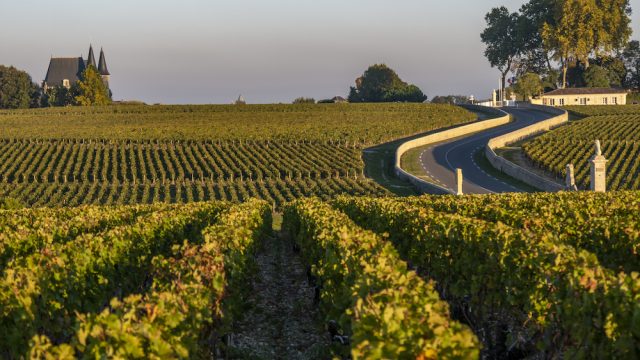
Here we descend a level of detail and we come across a perhaps rather more interesting proposition. This is one that seemed credible to me both ‘on paper’, reading through the month-by-month mereological conditions that defined the vintage and, rather more significantly, as I started to taste through the wines themselves.
In St-Estèphe, above all, and perhaps too in the northern sector of Pauillac, it is certainly credible to think that the meteorological conditions proved somewhat less challenging than they were further south. First, there was a little less intense rainfall and a little less heat following the periodic downpours that characterised June —and provided elsewhere the perfect conditions for mildew propagation. In short, mildew pressure was lower; and yields here are correspondingly higher.
It is also credible to think that the Northern Médoc’s typically cooler and more clay-dominated soils allowed the vines to cope better with the unprecedented heatwave conditions of the late summer, with proximity to the ocean also helping to ensure significant variations in temperature between the night and the day into the crucial ripening period.
These factors led me to anticipate a particular concentration of great wines from St-Estèphe and the northern half of Pauillac; essentially, the vineyards north of the town of Pauillac itself – such as Lafite, Mouton, Clerc-Milon, Duhart-Milon, Pontet Canet and Pedesclaux.
And this is, broadly speaking, what I found. In a heterogeneous vintage, the wines of St-Estèphe and its border with Pauillac turned out time and again to be both homogenous and exceptional in their quality.
There are plenty of fantastic wines from elsewhere in the Médoc from La Lagune and Cantemerle, through Margaux, St-Julien and upwards, and the left-bank more generally, throughout Pessac-Léognan, in red and in white, and most certainly in Barsac and Sauternes.
But if there is a particularly high concentration it is to be found in the north.
In my appellation-by-appellation profiles of the vintage I hope to enter more into the details of this.
Q5. … And a limestone vintage in Saint-Émilion?

It seems unfair to reflect on the relative quality of the wines of the left-bank without doing something similar for the right-bank, not least as just as many of the stars of the vintage are to be found here.
But it is not easy to identify an equivalent proposition to that above for the right-bank. So I have cheated a little in descending a level of detail further to consider a within-appellation proposition. This, again, seems credible both ‘on paper’, considering the capacity to cope with the meteorological challenges of the vintage, and in the barrel cellar (from my tastings).
My suggestion here is that, if there is a particular (figurative) hot spot to be found on the right-bank in this vintage, it is those wines chiselled from the limestone plateaux and côteaux (slopes) of Saint-Émilion, and perhaps beyond in a number of satellite appellations, notably Castillon, Fronsac and Lussac.
These terroirs are typically windy and well-draining and both factors reduce mildew pressure. Purer limestone soils may also be a little easier to treat than the clay soils onto (and into) which tractors venture with trepidation after significant rainfall —sometimes never to return.
And, once again, these cooler soils typically reduce hydric and heat stress with the deep root systems their poverty encourages helping the plant to sustain itself and continue to ripen when others would shut down. Unremarkably, in the end, a great number of the vintage’s notable successes come from such terroir.
But so too, if for not entirely similar reasons, the plateau of Pomerol and the perennial Saint-Émilion sweet spot that includes Cheval Blanc and Figeac – as my appellation-by-appellation profiles will reveal, I hope, in much more considered detail.
Q6. Is there a correlation between appellation (and/or vineyard) yields and quality?
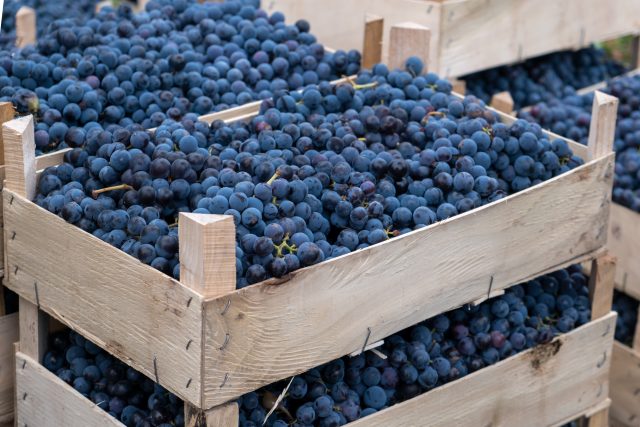
This is one of those questions that I almost wish I hadn’t asked myself. It is a difficult question. But perhaps an important one.
Indeed, there are two questions here and the answer to each is subtly different. In general terms, there is a lot to learn from average yields, above all from a vintage like this. But one needs to know the back story. For there are different reasons why yields might fall, above all at the vineyard level.
The two most significant factors reducing yields are mildew losses and the desiccation of fruit — above all Merlot — on the vines under the intense heat and hydric stress of the heatwave episodes in the second half of August and into early September.
Though it has been widely reported that mildew accounts for the greatest proportion of these losses, what I was repeatedly told was that mildew losses in most grands crus classés and equivalent vineyards were small or negligible. Almost every vineyard that I visited with declared yields below 38 hl/ha reported that their losses had come almost entirely from the burning and desiccation of fruit at the end of the ripening season. Some properties lost 25 % of their potential yield in what was otherwise a generous vintage in this way.
Yet even this is to paint too simplistic a picture. For where the fight against mildew was lost, the toll was devastating. And the fewer the resources one had access to, the more likely that was. Additionally, the battle against mildew was particularly difficult for those practicing organic and/or biodynamic viticulture, reliant as they were on multiple passages through the vineyard spraying the single authorised treatment, “La bouillie Bordelaise” — a solution of copper sulphate that is a contract treatment and that washes off the plant each time it rains.
Complicating things further, the desiccation of the fruit on the vines under the intense heatwave conditions of the late summer was greatest in Merlot plots already weakened by mildew damage. For this reduced the capacity of the vine to cope with stress of any kind. In short, even where mildew was not the proximate cause of yield loss, it was certainly an underlying factor.
All of this might make it tempting to assume that low average appellation yields (as for instance in Margaux) indicate greater meteorological pressure and hence lower average quality. But that is another in a now long line of ostensibly credible but ultimately somewhat problematic inferences.
It is wrong in two key respects. First, where there was significant mildew pressure it was highly unevenly distributed with the appellation, with neighbouring vineyards in Margaux, for instance, seeing differences in average vineyard yields of over 30 hl/ha in some cases. Second, and more importantly still, low vineyards yields — and the lower average appellation yields to which they contribute —are not in any sense directly linked to the lower quality of the final wine. For mildew ravaged plots do not make the cut for selection in the grands vins of leading estates, just as optical and densimetric sorting ensure that desiccated fruit is discarded.
Therefore, while low yields typically indicate the presence of significant meteorological challenges they cannot be read as a proxy for quality – either at the appellation or the vineyard level.
Q7. And what of the whites and Sauternes?
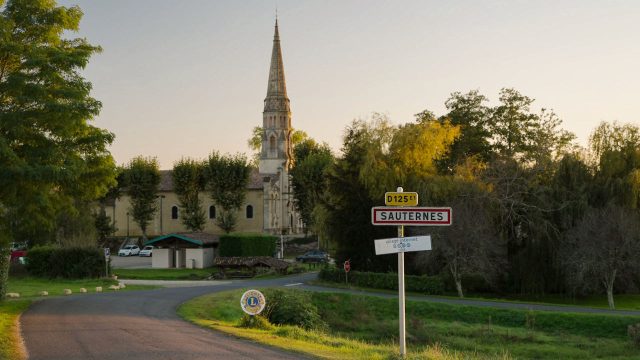
As ever, the focus of attention when it comes to en primeur reporting are the red wines of the leading appellations of the left and right-banks. But we should not overlook the dry whites and the Barsac and Sauternes produced in the 2023 vintage. I will return to each in detail in my appellation-by-appellation vintage profiles.
But suffice it to say for now that, though also somewhat heterogeneous in quality, the dry whites and, above all, the Barsac and Sauternes often produced again in tiny volumes (typically below 5 hl/ha) are, at their best, vibrantly fresh, bright, vivid and dynamic wines that deserve attention.
In difficult market conditions, they have actually fared somewhat better than their red counterparts since 2019. If prices are right, they may well prove tempting offers.
Q8. A vintage to buy, but carefully?
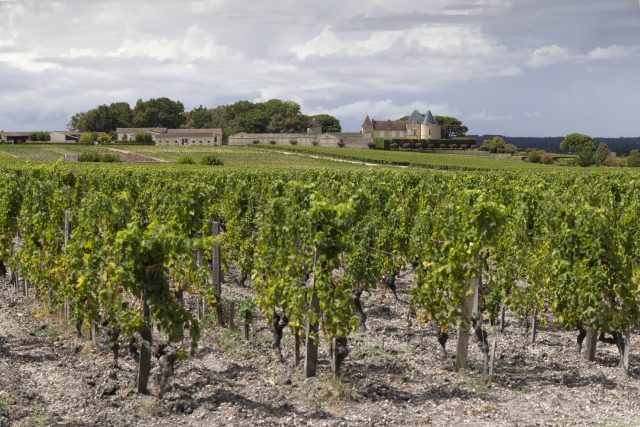
We will come to the market conditions presently, but on quality considerations alone, this is undoubtedly a vintage to buy. But it is not a vintage to buy blindly.
Nature is fickle, increasingly so. And in this vintage, perhaps more so than any other recent Bordeaux vintage, there are multiple factors each of which correlate with quality. But, crucially, the distribution of these factors varies strongly between vineyards and even plots within vineyards, linked as they are to the age of the vines, the quality of the clone, the varietal, the exposition, the soil type, the kind of viticulture practiced, the speed and reactivity of the vineyard workers in treating, the extent to which it was possible for tractors to enter the vineyard before and after significant rainfall and so forth.
Generalisations are, as such, impossible – or, at least, distinctly unreliable. Moreover, in order to know how a 2023 en primeur sample tasted today is likely to evolve in barrel and in bottle one needs to know quite a lot about how it comes to taste the way it does today.
There are different reasons for how a wine can come to taste as it does en primeur on any given day, including of course the quality and representativeness of the sample itself, and to read much beyond that is tricky without knowing the circumstances in which the wine was produced. This is not a vintage to taste blind en primeur, if ever there were one.
Yet, as Axel Marchal explained in his presentation at the Union des Grands Crus de Bordeaux (UGCB) press tasting on the vintage, the bottom line is that there are great wines to be found in every leading appellation. Reassuringly, the critical appreciation of the vintage thus far published also suggests that there is at least something of a consensus on what they are.
Q9. Why is the 2023 Bordeaux en primeur campaign so important?

I have already written at length on this, so let me be (perhaps uncharacteristically) brief, blunt, even brutal. The Bordeaux 2023 en primeur campaign is vital for the future of en primeur precisely because the en primeur system itself is broken.
It has stopped working for the consumer because, although Bordeaux continues to represent value for money at every price point, en primeur releases have stopped providing value for money relative to the secondary market prices of previous releases. There is, in short, little or no incentive to buy.
And it has stopped working for the négociants because, with the cost of capital at perhaps 3 to 4 times what it was two years ago, and with little incentive for the consumer to buy, there is no incentive for them to take allocations of wines they need to borrow to purchase and which they have little immediate chance of selling.
And, finally, it is about to stop working for the properties if there is not a significant price recalibration because, in such conditions, négociants have little choice other than to refuse their allocations.
But the solution is simple – or, at least, simply stated: a downward recalibration across the board to make en primeur releases competitive in the secondary market with previous releases.
Q10. What can we expect in terms of pricing?
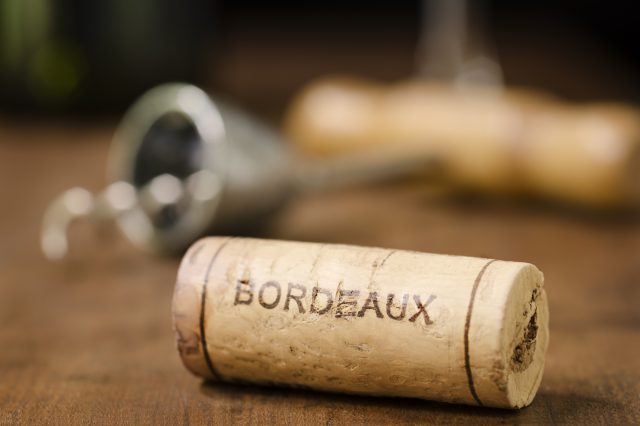
It is always difficult to speculate on what market actors will decide. And, on the eve of the first key releases we will not have to wait long to see what they have decided.
But what is already clear is that the Bordeaux 2023 en primeur campaign is the most coordinated in advance that I have ever witnessed. And it needs to be. To know already the release dates of every single first growth is unprecedented, at least for me – and the information has been widely diffused. That I read as a quite conscious choice. The choice is to demonstrate before the campaign opens that Bordeaux has been listening, has got the message, and that some, at least, are ready to act.
What we can expect to see, it now seems sure, are symbolically significant early releases from Léoville Las Cases, Pontet Canet and, vitally, Lafite Rothschild this week. If I read the signals correctly, I anticipate release price reductions (relative to 2022) of between 30 and 35 per cent in each case (in euros).
The question is whether this coordinated price signalling will be followed – in short, whether the discipline will hold. I am mildly optimistic, despite the clear presence amongst decision makers in many leading estates of price recalibration ‘sceptics’ (for want of a better term). Crucial in all of this will be Mouton Rothschild’s release on May 6th. It will give us a first impression at least of how the other first growths are likely to positions themselves. At that point we should have a clear idea of how the campaign is likely to hold.
Buckle in for what could be a roller-coaster ride!
Read more:
The db podcast: might fine wines from Burgundy join La Place de Bordeaux?

